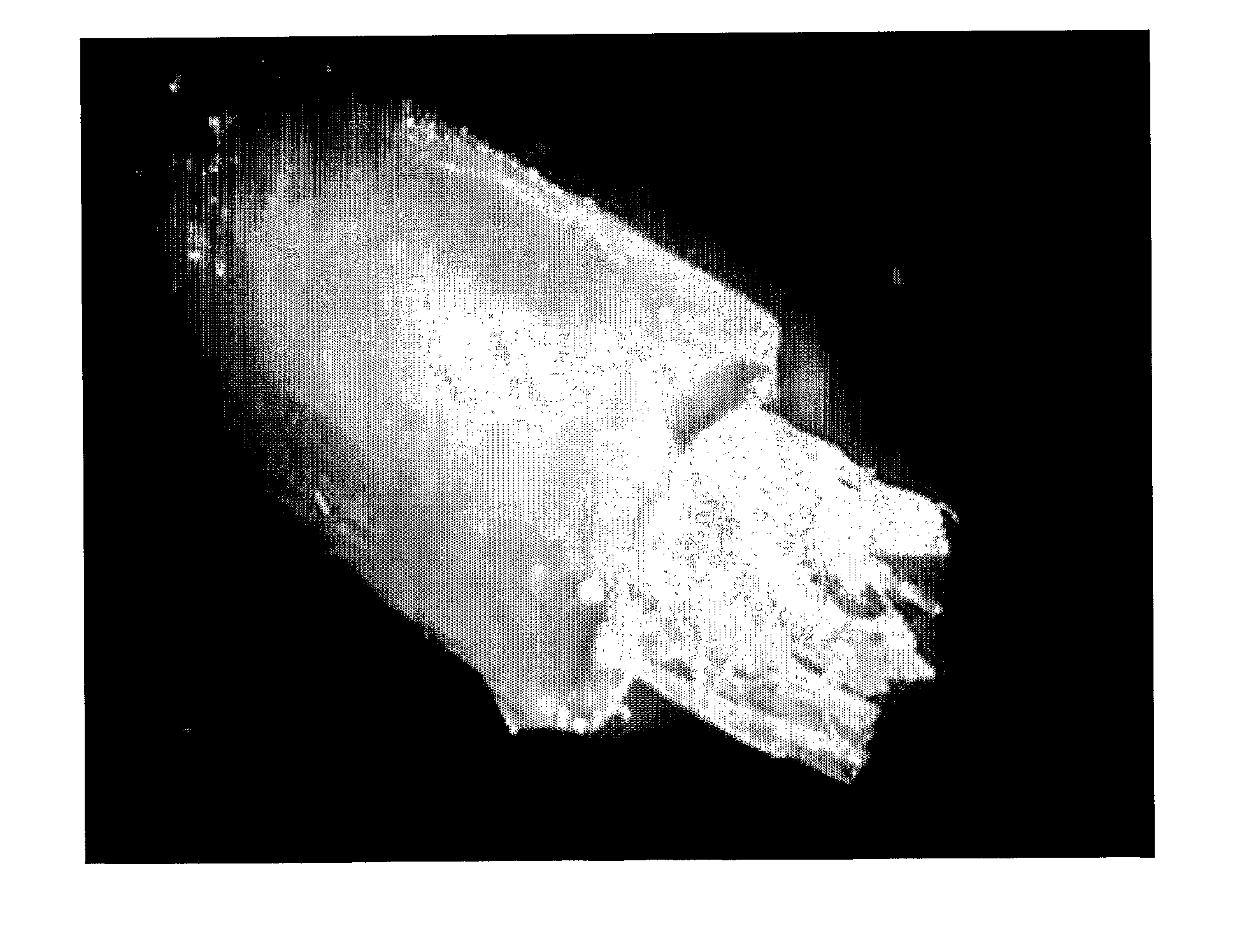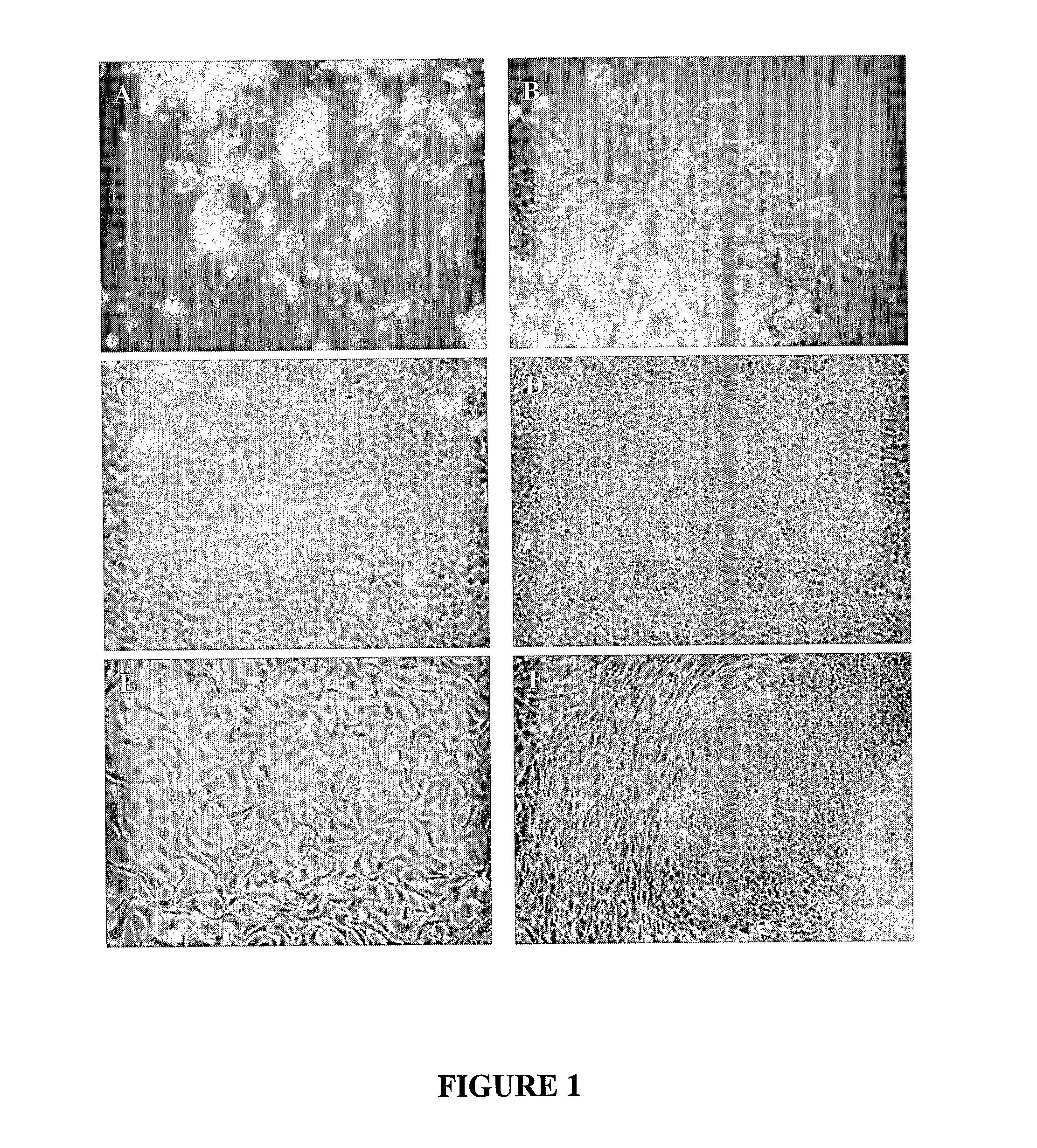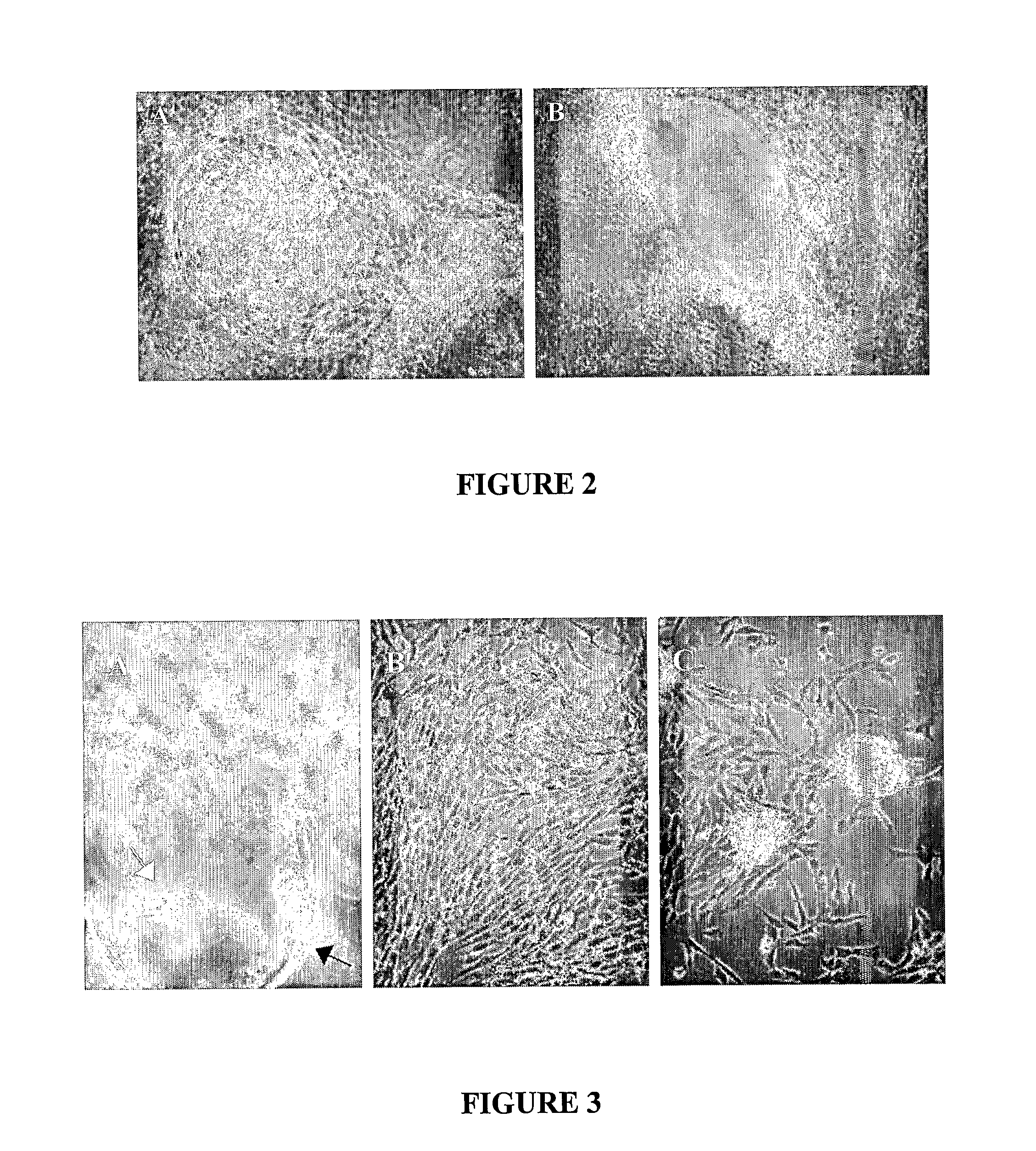Compositions and Methods for Stem Cell Expansion and Differentiation
a technology of stem cells and compositions, applied in the field of compositions and methods for obtaining expanded stem cells, can solve the problems of not widely used stem cells in cell replacement and tissue regeneration therapies, lif added does not prevent differentiation of human es cells, and the use of feeder cells substantially increases production costs, so as to achieve the effect of not damaging the overall structur
- Summary
- Abstract
- Description
- Claims
- Application Information
AI Technical Summary
Benefits of technology
Problems solved by technology
Method used
Image
Examples
example 1
Pluripotent Human Embryonic Stem Cells (hES) Cultures in a HA-LN-Gel
[0165] Undifferentiated hES cells (H9.2 clone) were grown on mouse embryo fibroblasts as previously described (Amit et al, supra). Briefly, the cells were grown in a serum free culture medium or in medium with 20% fetal calf serum (FCS). The primary cultures were dissociated with collagenase IV.
[0166] Subsequently, cells were embedded in the HA-LN-Gel, and cultured without a feeder layer in the Expansion Media described above. In the gel milieu, cells exhibited intensive growth of both epithelial-like cells, which actively divided forming a monolayer (FIG. 1) and embryoid bodies (EB)-like constructs that grew in a three-dimensional pattern (FIG. 2). These cultures were grown in HA-LN-Gel for 10 weeks; during this time several cultures were further dissociated and reseeded in HA-LN-Gel. Differentiated cells could not be detected at this stage.
[0167]FIG. 1 shows micrographs of human ES cells grown in HA-LN-Gel. Cel...
example 2
Cultivation of Multipotent Precursor Cells from Bovine Blastocyte
[0169] Bovine blastocytes grown for about a month either as clusters of embryonic cells in nutrient medium covered by a drop of oil, or as a dissociated cell culture were provided by IMT Company. The surrounding zona pelicuda was manually removed, and the inner cell mass (ICM) was enzymatically dissociated and seeded in HA-LN-Gel (containing serum replacement medium or medium supplemented with serum and factors). After few days as stationary culture in the gel, the cells were further dissociated and re-seeded in HA-LN-Gel.
[0170]FIG. 3 shows micrographs of bovine blastocytes grown in HA-LN-Gel. Inner cell mass (ICM) of bovine blastocyte (white arrow) inside the remains of the zona pelicuda (black arrow) 1 day after seeding in HA-LN-Gel; original magnification: 400× (section A). Cellular growth and migration from the ICM, two weeks after seeding in HA-LN-Gel; original magnification: 200× (section B). Growth of undiffer...
example 3
Cultivation of Umbilical Cord Blood Stem Cells
[0171] Umbilical cord blood was collected immediately following delivery into 50 ml polystyrene tubes containing heparin. Fresh blood (up to 4 hours on ice) was subjected to FICOL gradient to remove red blood cells (RBC). At this stage, cord blood stem cells were embedded in HA-LN-Gel, in RPMI medium supplemented with 10% bovine serum.
[0172] Alternatively, after FICOL gradient, different populations of WBC were separated based on their expression of surface molecules CD34 and CD133, using magnetic beads and the kit of Milentni BioTech. Different populations of cells (i.e. CD34+, CD34−, CD133+, CD133−) were seeded in HA-LN-Gel as described above.
[0173] HA-LN-Gel was found to support the growth and replication without differentiation of the various populations of WBC isolated from umbilical cord blood (FIG. 4, sections A and B). Aggregates of round and dividing cells were observed for a period of several weeks, without the presence of f...
PUM
| Property | Measurement | Unit |
|---|---|---|
| Composition | aaaaa | aaaaa |
| Structure | aaaaa | aaaaa |
| Biocompatibility | aaaaa | aaaaa |
Abstract
Description
Claims
Application Information
 Login to View More
Login to View More - R&D
- Intellectual Property
- Life Sciences
- Materials
- Tech Scout
- Unparalleled Data Quality
- Higher Quality Content
- 60% Fewer Hallucinations
Browse by: Latest US Patents, China's latest patents, Technical Efficacy Thesaurus, Application Domain, Technology Topic, Popular Technical Reports.
© 2025 PatSnap. All rights reserved.Legal|Privacy policy|Modern Slavery Act Transparency Statement|Sitemap|About US| Contact US: help@patsnap.com



